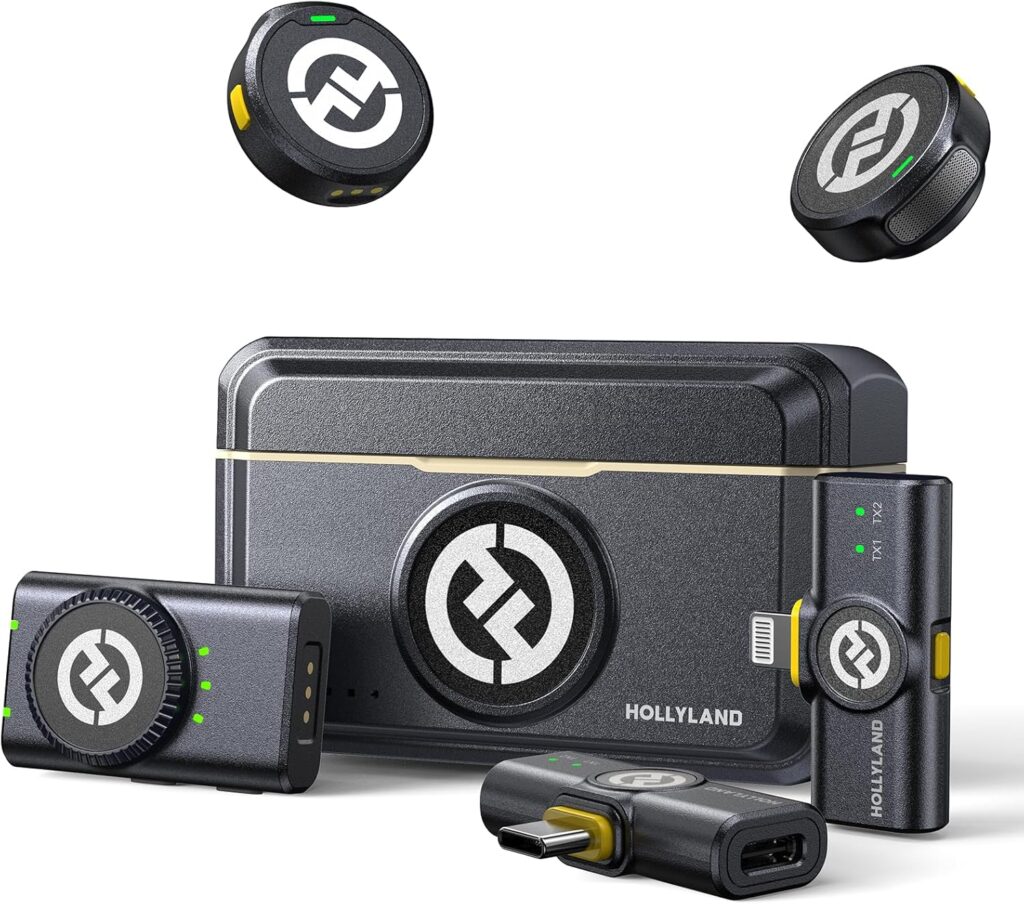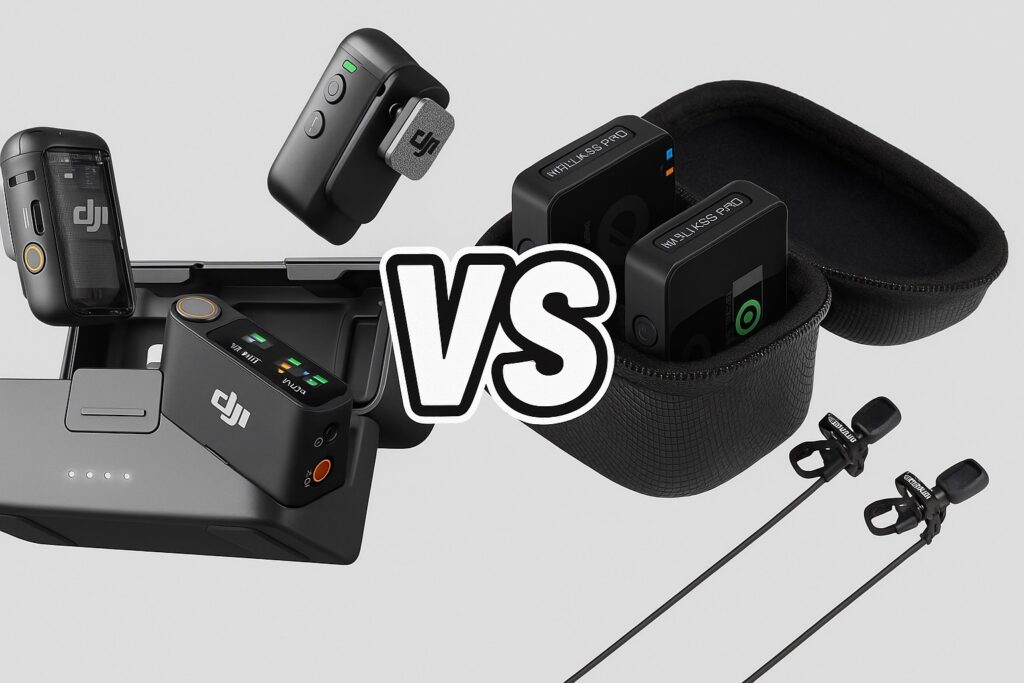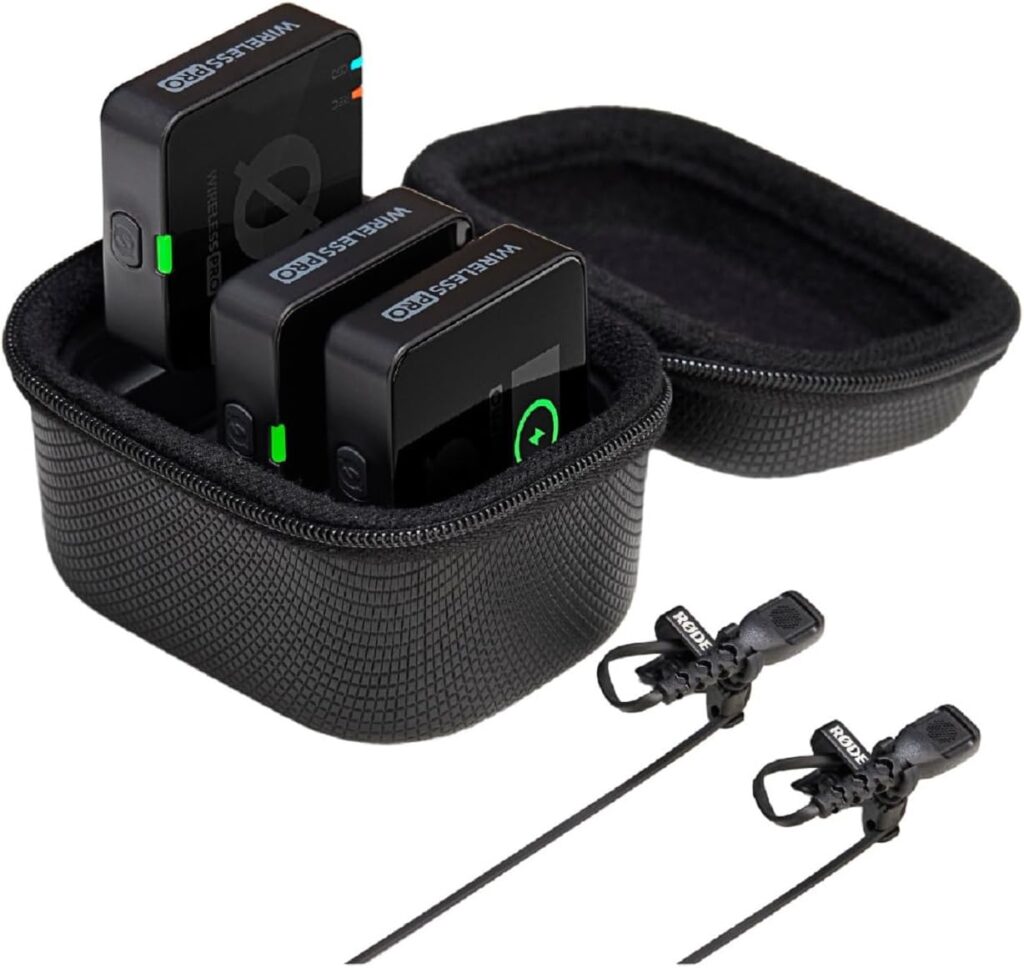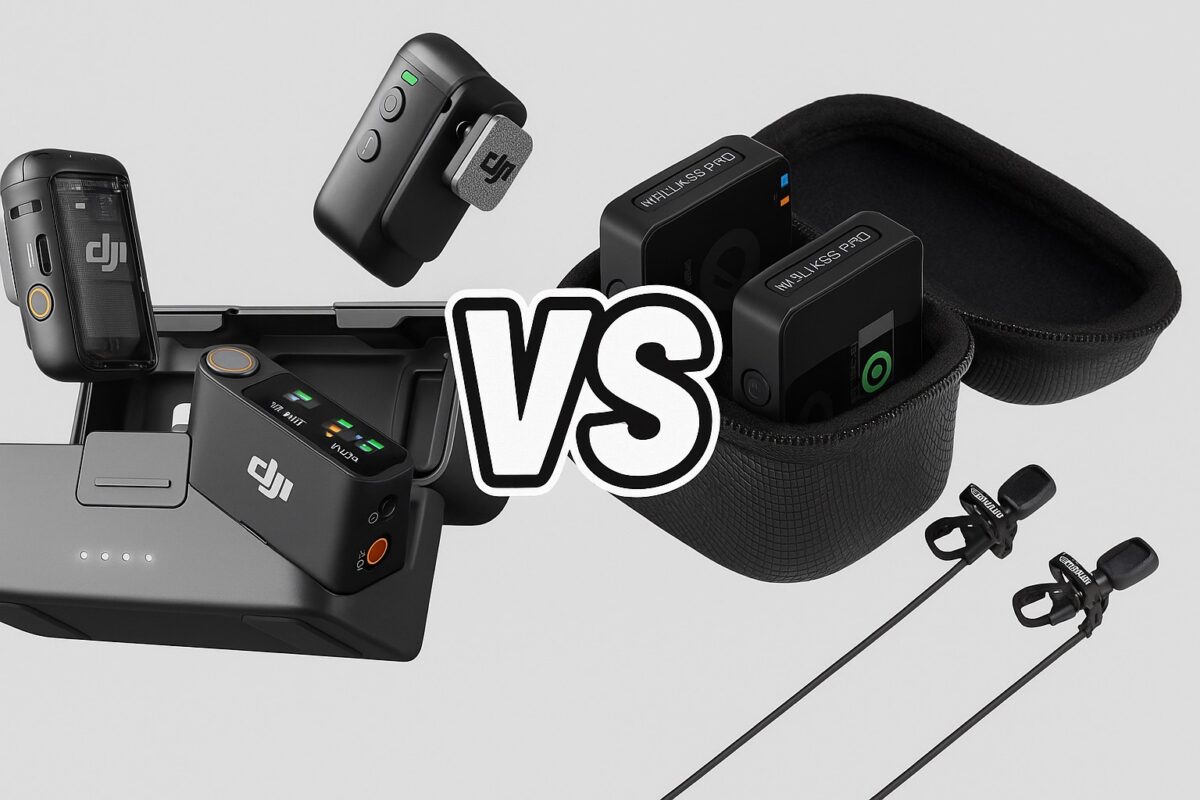In preparation for a trip to Sight Village, I wanted to up my game with accessible wireless microphones after getting tangled in cables last time. Trying to hold the gimbal still in one hand and hold the microphone in the other with a cable between the microphone and the phone, then headphones plugged into the microphone tethering me to the microphone, became very challenging. I needed to reduce the cables involved.
Hollyland Lark M2: Accessible Wireless Microphones?

I started looking at the Holland Lark M2 as a cost effective wireless microphones system, but when I asked around and searched for information about its accessibility. I couldn’t find anything that gave me confidence that it would be accessible. This model is also dependant completely on there being no interference between the microphone and receiver. I did read about challenges seeing its status when it had the dead cats fitted. The Hollyland Lark M2 comes with a range of connection options, USB C, Lightening and camera along with an option for all three. I need the flexibility of all three, which increased the price. The combination of increase price, dependence on connection and challenges with seeing the status when the dead cats are fitted caused me to rule the Hollyland Lark M2 out.
Update 11 August 2025: I have heard from a trusted friend that they have the Hollyland Lark M2 and they work well for them with no usable vision.
Link: Hollyland Lark M2 on Amazon (Affiliate Link)
DJI Mic 2 Vs Rode Wireless Mic Pro

With the cost effective Hollyland Lark M2 ruled out, I turned my attention to the DJI Mic 2 and the Rode Wireless Mic Pro, both capable of recording locally as well as transmitting live.
The DJI Mic 2 seemed the more cost effective of the two devices, but as I researched them both I discovered the Rode Wireless Mic Pro included lavalier mics. Factoring in the addition cost of lavalier mics for the DJI Mic 2 makes the Rode Wireless Mic Pro better value for money.
The DJI Mic 2 has a touch screen, which isn’t accessible, while the Rode Wireless Mic Pro is setup via an accessible app on a phone or computer, but does need plugging in to change the settings. Fortunately, the settings don’t need changing a lot. Both models have auto gain and 32bit float, this means that audio is always captured and useable.
Links:
- Rode Wireless Mic Pro on Amazon (Affiliate Link)
- DJI Mic 2 on Amazon (Affiliate Link)
- DJI Lavelier Mics on Amazon (Affiliate Link)
The Winner: Rode Wireless Mic Pro

After much debate, I selected the Rode Wireless Mic Pro and also purchase the Rode Interview Go accessory to turn a microphone into an interview microphone. I had a great trip to Sight Village 2025. The microphones helped capture multiple interviews and after much fun learning to edit, they are available in Sight Village 2025 playlist on the Lincoln and Lindsey Blind Society YouTube Channel
Links:
Tell me what you think in the comments below or on X @timdixon82


